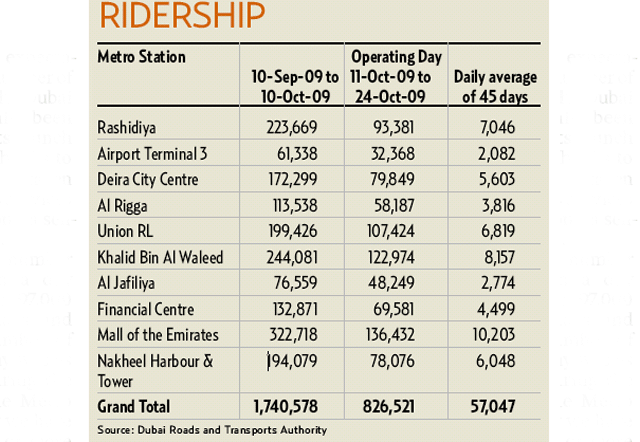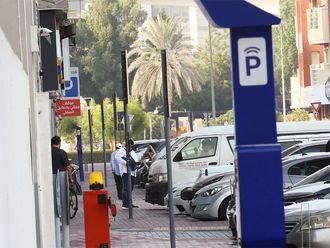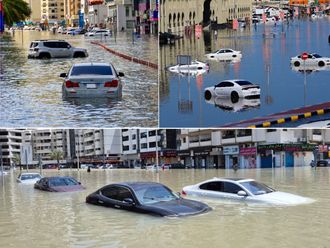Dubai: Contrary to expectations, the average number of passengers using the Dubai Metro has gradually been increasing since its launch on September 9, thanks to some quick measures taken to improve various services at the Metro stations, a senior official has said.
Interactive: All you need to know about the Dubai Metro
"The maximum number of passengers in a day touched more than 97,000 during Eid holidays and the minimum number of passengers in a day was as low as 42,000 during the first month of the Metro operation but now we have achieved average of more than 57,000 passengers per day," said Ramadan Abdullah, Director of Operations at the Rail Agency of the Dubai Roads and Transport Authority (RTA).
The following are excerpts from his interview:
Gulf News: What major challenges did you face since the launch of the Dubai Metro?
Ramadan Abdullah: One of the major tasks faced by the Metro operator is managing all commuters, who are relatively new to the Metro system.
As ridership demand increases, one of the main challenges is to make the commuters understand the Metro system. This includes educating passengers on the design of the Metro system, safety and awareness about railway rules and regulations.
What is the public's response?
The public is showing a very positive response and now many are using the Metro for their regular trips. The average number of passengers has reached more than 57,000 during the first 45 days, which is very encouraging with just 10 stations opened and only 11 trains running on the tracks.
More than 2.5 million passengers have used the Metro during the first six weeks. People are getting used to the Metro system after exploring it. Apart from using it for leisure trips and going to shopping malls, the number of people using it for their daily work trips has also significantly increased.
The trend shows that the Metro will be the most popular mode of transport once it is fully operational with both the lines and all the stations opened next year.
What kind of mistakes do the passengers commit and how the RTA is tackling them?
Travelling in the wrong class has been the major mistake while passengers eating and drinking inside the trains has also been an issue. Many passengers have been found travelling in the wrong zones.
They buy ticket for one zone and tend to travel in more than one zone. While some are still learning to use the fare system but many are doing it deliberately just to save money but they get caught as they cannot cheat the system.
We have launched various campaigns to educate them. We have increased the number of signs and instruction boards at the stations to educate passenger and guide them to through their journey.
We have also increased the number of staff members at the stations and inside the trains to guide the passengers and check the violations. Also, we have hired more Arabic speaking staff, especially Emiratis, to be deputised at the stations.
What areas need improvement and how it is being done?
We are still in the teething phase of the Metro operations and we thus have several areas of improvements. Primarily, this includes increasing the ridership demand as ridership increases especially during weekends and holidays.
Though the ridership is increasing, we encourage more people to use the Metro. And to achieve this objective, we are working towards increasing the efficiency and frequency.
This is being achieved by the various task force teams assigned to look into every aspect of the operations and resolving the issues without delays.
Is the Metro operation going according to the expectations?
For any new Metro, it is expected that the passenger demand during the first few weeks would be high compared to other periods. The Dubai Metro was able to meet the expectation with efficient operations managed by the operator.
The Metro system is performing as designed and is operating smoothly. The total number of train service disruption was minimal as compared to the total number of hours operated and it was also mostly caused by passenger actions such as pushing the emergency buttons. We have achieved train service availability of 98 per cent and more than 95 per cent punctuality level.
How many Nol cards have been sold so far?
The response has been tremendous and we have sold more than 178,213 long term validity Nol Cards and 484,907 Nol Red Tickets, good for a single journey.
How did the integrated transport system work?
Various modes of transport provide sufficient feeder support to the Metro system both during normal working conditions and whenever there is a train service interruption.
Although there are some complaints by passengers about the shortage of buses at certain stations, the performance of integrated transport support services is currently satisfactory.
What do you feel needs to be done to make commuters use the system efficiently?
We feel that continuous education of commuters about the best use of the integrated transport system mainly the Metro is essential.
Passengers need to plan their journeys and should be able to use various tools such as information boards and signs at the stations, and internet based journey planner called "‘Wojhati"' to make their journey comfortable.













